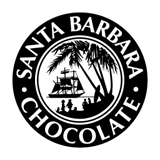Cocoa and chocolate products are more than just sweet treats—they also contain a variety of naturally occurring compounds, including a stimulant known as theobromine. Found in the seeds of the Theobroma cacao tree, theobromine is chemically related to caffeine but has a slightly different impact on the body.
Chocolate has a higher theobromine content by weight, despite the fact that most people associate it with caffeine. One of the main bioactive ingredients in cocoa is this substance, an alkaloid belonging to the xanthine family. It helps explain why chocolate can give you a mild energy and mood boost without the jolting effects of caffeine.
What Is Theobromine?
Theobromine (C₇H₈N₄O₂) is a bitter alkaloid that is naturally found in cacao beans. There are other chemicals in the same family, caffeine and theophylline, that it is structurally similar to. However, it has a less strong effect on the central nervous system.
Theobromine, first isolated from cocoa in the 19th century, derives its name from the scientific designation of the cacao tree—Theobroma, which translates to "food of the gods" in Greek. Although present in trace quantities in other plants such as tea and yerba mate, it is predominantly found in cacao.
Caffeine vs. Theobromine in Chocolate
Though caffeine is frequently mentioned when discussing energy-boosting foods, chocolate contains significantly more theobromine than caffeine. Both compounds are mild stimulants, but their intensity and effects on the body vary.
Theobromine in Cocoa Products
- A standard cup of hot cocoa contains roughly 10 mg of caffeine and over 200 mg of theobromine.
- A 100-gram semi-sweet dark chocolate bar has around 12 mg of caffeine and about 155 mg of theobromine.
In comparison, an 8-ounce cup of brewed coffee typically contains 95–165 mg of caffeine—substantially more than any chocolate product.
How Theobromine Affects the Body?
While caffeine tends to stimulate the central nervous system more directly, theobromine has a gentler and longer-lasting effect. It is a vasodilator, which means that it helps to widen blood vessels; it is also a diuretic, which means that it helps supports urine production; and it is a heart stimulant, which means that it gently increases heart rate. Due to these characteristics, it is a noteworthy compound for individuals who are either caffeine-sensitive or looking for an alternative that is less caffeine-based.
Key Effects of Theobromine:
- Mild mental alertness without jitters
- Mood-lifting properties
- Improved blood circulation
- Smooth muscle relaxation
- Longer duration of action compared to caffeine
Theobromine is absorbed more slowly than caffeine, so its effects can last longer and feel more stable throughout the day.
Chocolate Varieties and Theobromine Levels
How much theobromine is in chocolate depends on the type of chocolate and how much cocoa it has. Darker chocolates usually have more theobromine than milk chocolates. White chocolate, which doesn't have cocoa solids, has very little to no theobromine.
Approximate Theobromine Levels by Chocolate Type:
|
Chocolate Type |
Avg. Theobromine (mg/100g) |
| Unsweetened Cocoa Powder | 450–700 mg |
| Dark Chocolate (70–85%) | 200–450 mg |
| Milk Chocolate | 60–130 mg |
| White Chocolate | 0–2 mg |
Bean origin, processing, and formulation affect these values. Higher cocoa mass products like Santa Barbara Chocolate's high-flavanol cocoa powder or dark couverture chocolate have more theobromine.
Theobromine’s Role in Chocolate’s Appeal
While theobromine is not as well known as caffeine, it does contribute to the subtle stimulant effect that many people associate with eating chocolate. Unlike caffeine, which can cause nervousness or sleep disruption in sensitive people, theobromine provides a gentler lift that is frequently described as relaxing and mood-enhancing.
One of the reasons dark chocolate, especially in small portions, is often thought of as a comfort food is because it causes a mild physiological response.
Safety and Considerations
For Humans
For most people, the levels of theobromine found in chocolate are safe and may even support well-being when consumed in moderation. Extremely high doses, particularly of baking chocolate or concentrated cocoa products, may cause mild adverse effects like agitation or insomnia in people who are sensitive.
For Pets
It’s important to note that theobromine is toxic to dogs, cats, and other animals, as they metabolize the compound much more slowly than humans do. Because even small amounts of chocolate can be bad for pets, owners shouldn't give their animals any foods that contain chocolate.
Additional Benefits Linked to Theobromine
Beyond its stimulant properties, research has explored several other potential benefits of theobromine:
- Cardiovascular Support: Its vasodilating effect may support healthy blood pressure.
- Respiratory Health: It has been studied for its potential to reduce coughing by relaxing bronchial muscles.
- As a result of its interactions with neurotransmitters, it may promote emotional stability and cognitive acuity.
While these benefits are still being researched, theobromine’s gentle effect profile makes it a subject of interest in natural wellness circles.
Theobromine: A Signature Compound in Real Chocolate
Knowing theobromine's role helps you choose chocolate for recipes or wellness. Santa Barbara Chocolate uses high-quality cocoa that retains its natural theobromine.
Whether you're enjoying a piece of dark chocolate, sipping on a warm cup of cocoa, or using cacao nibs or powder in baking, you’re also getting a natural source of theobromine—a compound that has shaped how people enjoy chocolate for centuries.
